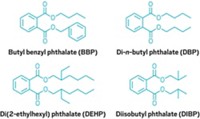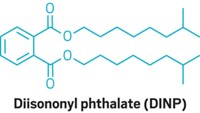Advertisement
Grab your lab coat. Let's get started
Welcome!
Welcome!
Create an account below to get 6 C&EN articles per month, receive newsletters and more - all free.
It seems this is your first time logging in online. Please enter the following information to continue.
As an ACS member you automatically get access to this site. All we need is few more details to create your reading experience.
Not you? Sign in with a different account.
Not you? Sign in with a different account.
ERROR 1
ERROR 1
ERROR 2
ERROR 2
ERROR 2
ERROR 2
ERROR 2
Password and Confirm password must match.
If you have an ACS member number, please enter it here so we can link this account to your membership. (optional)
ERROR 2
ACS values your privacy. By submitting your information, you are gaining access to C&EN and subscribing to our weekly newsletter. We use the information you provide to make your reading experience better, and we will never sell your data to third party members.
Policy
EU proposes criteria for identifying chemicals that alter hormones
Debate over classification of pesticides, biocides intensifies
by Britt E. Erickson
June 16, 2016
| A version of this story appeared in
Volume 94, Issue 25
The European Commission last week proposed long-awaited criteria to help regulators determine which chemicals in pesticides and biocidal products such as hand disinfectants are—and are not—endocrine disruptors.
The European Union already has regulations in place to prohibit endocrine-disrupting chemicals in pesticides and biocides. The proposed criteria would be used to determine which chemicals fall under those regulations.
The proposal adopts the World Health Organization’s definition of endocrine disruptors as chemicals that alter hormones in animals and humans. Such chemicals have “a hormonal function, an adverse effect, and a causality between the two,” says the commission, which is the EU’s executive branch.
Neither the chemical industry nor endocrinologists are pleased with the proposed criteria.
“We are disappointed that we still do not have a set of scientific criteria that are suitable for the purposes of regulatory decision-making,” groups representing the European chemical and pesticide industries say. “Many substances which present no risk to human health or the environment will be identified as endocrine disruptors using this definition,” they predict.
In contrast, endocrinologists are calling the criteria too restrictive, saying the proposal would result in few chemicals being identified and regulated as endocrine disruptors.
“The European Commission has set the bar so high that it will be challenging for chemicals to meet the standard, even when there is scientific evidence of harm,” says Henry M. Kronenberg, president of the Endocrine Society.





Join the conversation
Contact the reporter
Submit a Letter to the Editor for publication
Engage with us on Twitter